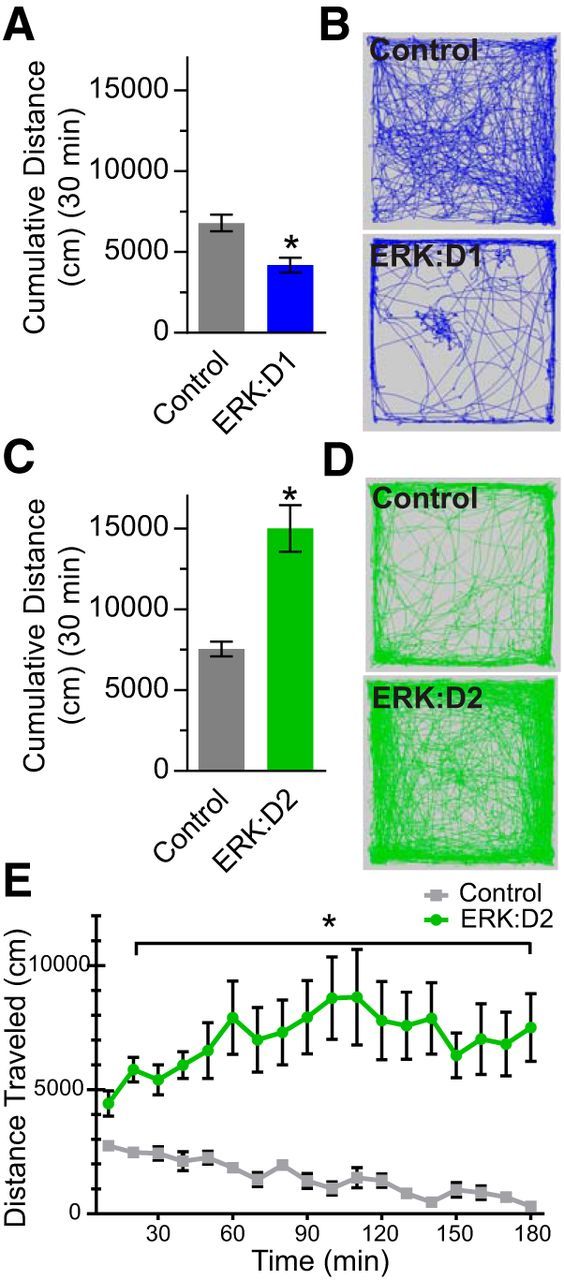Figure 2.

ERK signaling is required for pathway-specific regulation of locomotor behavior. A, Quantification of total distance traveled in a 30 min testing period by ERK:D1 (blue bar) and paired littermate control (gray bar) mice at P21. ERK:D1 animals show a significant reduction in locomotor activity (*p < 0.01, n = 10 mice/genotype). B, Representative recordings of total distance traveled (30 min) in control and ERK:D1 animals. C, Quantification of total distance traveled in a 30 min testing period by ERK:D2 mutant mice (green bar) and paired littermate controls (gray bar). ERK:D2 mutants show significantly more locomotor activity than controls (*p < 0.001, n = 10mice/genotype). D, Representative tracks of cumulative open-field activity for control and ERK:D2 mutant mice. E, Three hour open-field analysis of ERK:D2 mice and controls. Shown is total distance traveled as a function of time. ERK:D2 mutant mice (green trace) showed significantly increased movement throughout the entire 3 h testing period compared with control animals (gray trace), which steadily reduce activity throughout the trial (*p < 0.001; n = 10 mice/genotype). All data are presented as mean ± SEM.
